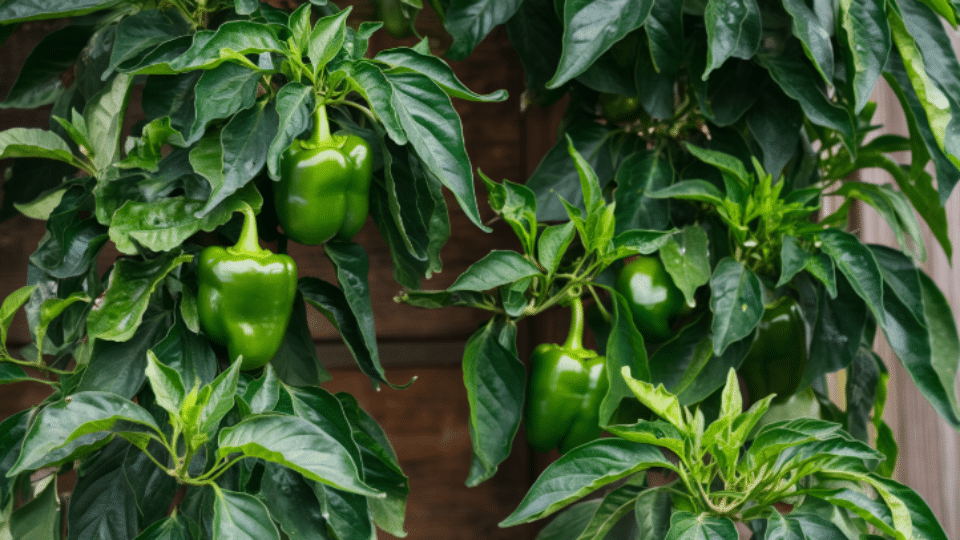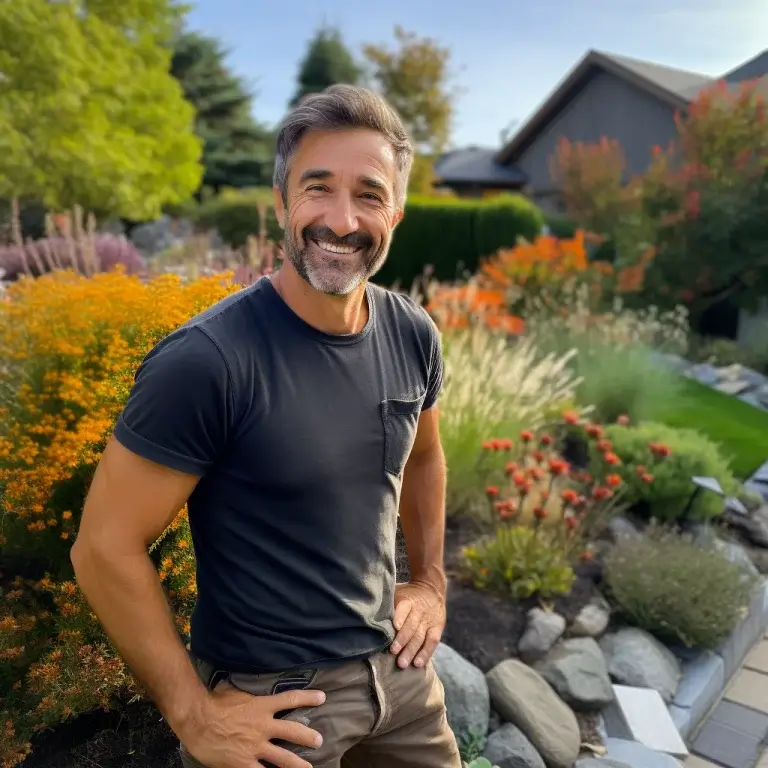Last season, I watched my neighbor’s pepper plants struggle with yellowing leaves and tiny peppers while mine thrived just a few feet away.
The difference wasn’t the soil, fertilizer, or watering schedule. It was something most gardeners get wrong from day one: spacing.
When you space peppers correctly, each plant receives the airflow it needs to combat disease, the sunlight required for strong growth, and sufficient room to develop a full root system.
The result? Bigger peppers, healthier plants, and harvests that keep coming all season long.
I’ll show you the exact spacing measurements for every pepper type, as well as the common mistakes that can turn productive plants into disappointing ones. Let’s make sure your pepper garden reaches its full potential this year.
Why Proper Pepper Spacing Matters More Than You Think?
Proper spacing has a direct impact on pepper harvest. When peppers have sufficient space, they produce more fruit and remain healthier throughout the growing season.
Overcrowded peppers face serious problems. Plants compete for water and nutrients. They grow weak and produce fewer peppers. Disease spreads more quickly when leaves come into contact with each other.
Poor spacing creates a domino effect. Weak plants attract pests. Stressed peppers drop flowers before forming fruit. Dense foliage traps moisture and breeds disease.
The right space lets each plant reach its full potential. Your peppers will be bigger, tastier, and more numerous when they’re not fighting for resources.
Good spacing brings three key benefits:
- Better airflow – Prevents fungal diseases and pest problems.
- More sunlight – Each plant gets the light it needs to grow strong.
- Easier care – You can water, prune, and harvest without damaging plants.
Smart spacing is the key to the difference between a struggling garden and a productive one.
When & How to Plant Peppers?
Wait until the warm weather arrives before planting peppers outdoors. These heat-loving plants need soil temperatures of 70–85°F (21–29°C) to grow properly.
1. Perfect Planting Time
- Plant peppers after your last frost date passes. Nighttime temperatures should consistently stay above 55°F (13°C). In most areas, this typically occurs in late spring, around mid-to-late May.
- Cold soil damages pepper roots quickly. Even light frost can kill young plants. Check your local frost dates and wait for stable warm weather.
2. Starting from Seed
- Begin pepper seeds indoors 6–8 weeks before your last frost date. Seeds need warm conditions to sprout properly. Most regions have growing seasons too short for direct outdoor seeding.
- Use seed starting trays and keep the soil warm during germination. Place trays in a sunny window or under grow lights.
3. Transplanting Process
- Harden off seedlings for 7–10 days before transplanting. This means gradually exposing plants to outdoor conditions. Start with just a few hours outside each day.
- Move hardened plants to the garden when the soil is consistently warm and dry. Handle roots gently during transplanting, and water well after planting.
Factors That Influence Spacing Needs
Spacing isn’t one-size-fits-all for peppers. Several factors determine the actual amount of space your plants require.
1. Plant Variety Size: Large varieties need more room to grow. Bell peppers require 24 inches while mini peppers only need 10 inches. Check mature plant size before spacing.
2. Growing Location: Containers restrict airflow around plants. Ground-planted peppers get natural air circulation. Container peppers need extra space between pots for proper airflow.
3. Soil Quality: Rich soil supports closer planting. Poor soil forces plants to compete harder for nutrients. Give extra space in sandy or clay soils with low fertility.
4. Climate Conditions: Humid areas breed plant diseases fast. Wet climates need wider spacing for air circulation. Dry climates can handle closer spacing without disease problems.
5. Plant Support Systems: Supported plants use vertical space better. Unstaked peppers spread wider and need more room. Caged or staked plants can be spaced 2-3 inches closer.
6. Garden Layout Style: Single rows need different spacing from blocks. Block planting allows closer spacing within blocks. Row planting needs consistent spacing for equipment access.
How to Space Different Pepper Types?
Each pepper type needs its own spacing. Bigger plants need more room. Smaller plants can grow closer together.
1. Bell Peppers: 18–24 Inches Apart
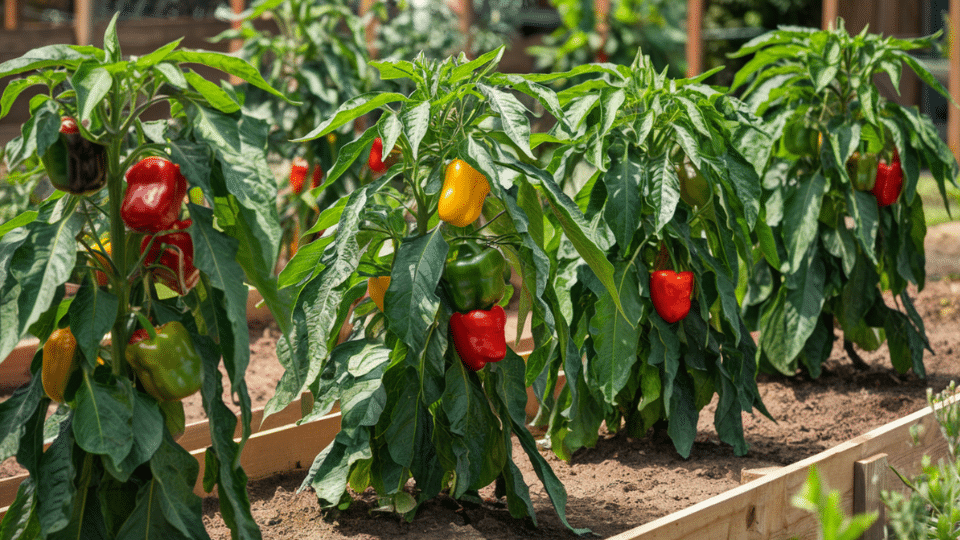
Big plants that spread widely. Bell peppers grow tall and require a lot of space for their large leaves and heavy fruits.
- Space 24 inches apart for best results
- Use 18 inches only in small gardens
- Please give them the most room of all pepper types
Pro Tip: Plant basil between bell pepper rows. Basil helps repel pests and won’t compete for space since it grows low. The combination also makes harvesting easier for cooking.
2. Hot Peppers: 14–16 Inches Apart
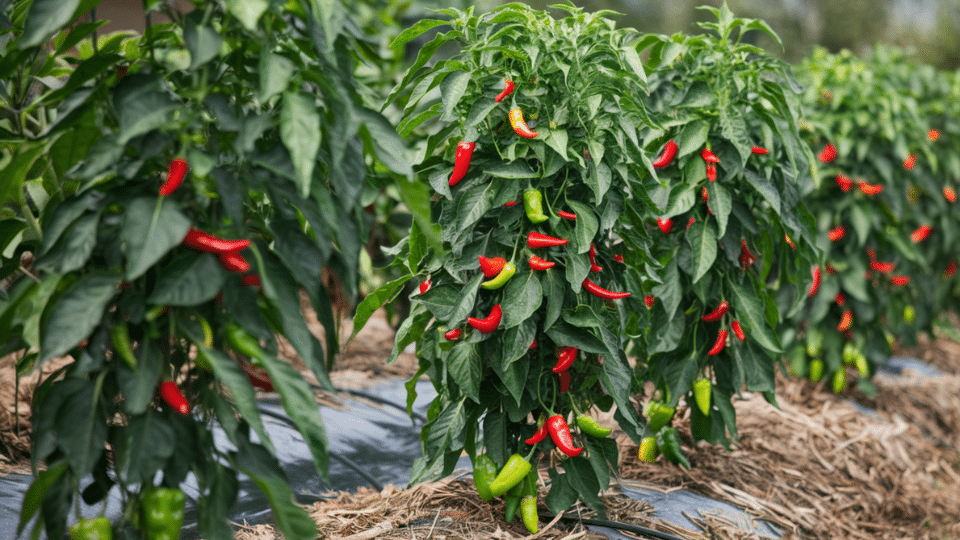
Medium-sized plants that grow upright. These peppers stay smaller than bell peppers but still require good airflow.
- Space 16 inches apart for more peppers
- Plant in groups for easier picking
- Need less room than bell peppers
Pro Tip: Stress hot peppers slightly by reducing water in the last 2 weeks before harvest. This concentrates the heat and makes peppers spicier. Just don’t let plants wilt completely.
3. Mini Peppers: 10–12 Inches Apart
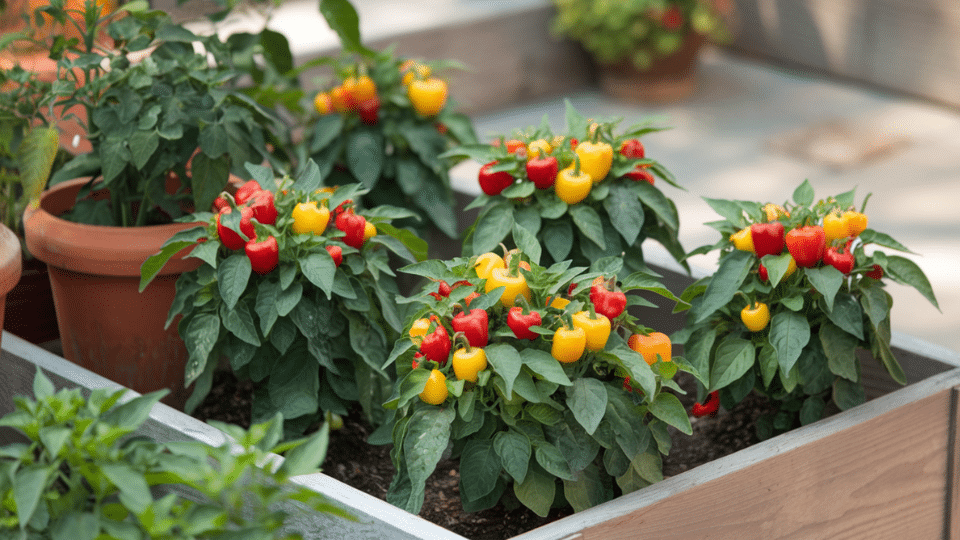
Small plants are perfect for containers. Dwarf peppers remain compact and don’t spread extensively.
- Space 12 inches apart in garden beds
- Use 10 inches for minimal types
- Great for pots and small spaces
Pro Tip: Plant mini peppers every 3 weeks for continuous harvest. Their small size means they mature quickly, giving you fresh peppers all season long instead of one big harvest.
4. Banana Peppers: 12–18 Inches Apart
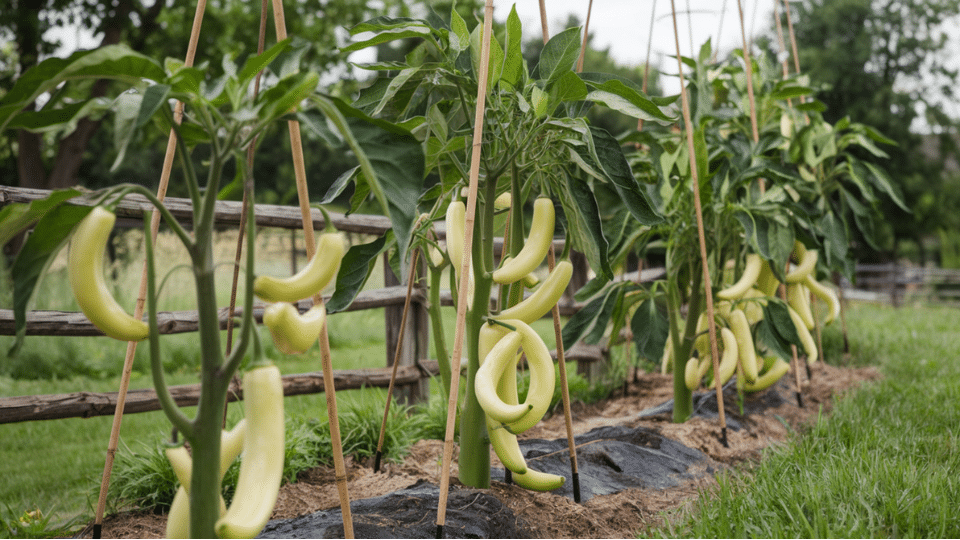
Prolific plants that produce lots of peppers. They grow to be medium-sized but produce a large number of fruits.
- Space 18 inches apart for easy picking
- Use stakes because the fruits get heavy
- Need room for multiple harvests
Pro Tip: Harvest banana peppers when they’re light green for mild flavor, or wait until they turn yellow for sweeter taste. Pick regularly to keep plants producing more peppers.
5. Sweet Italian Peppers: 15–20 Inches Apart
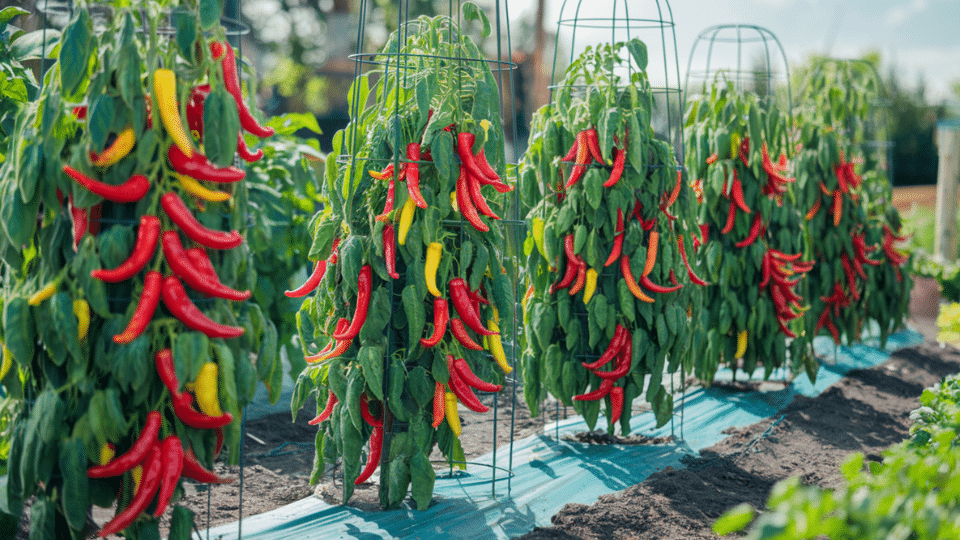
Long peppers that hang down. Need space to reach the hanging fruits easily.
- Space for easy access to long peppers
- Use 15 inches for smaller gardens
- Allow room for staking tall plants
Pro Tip: Support Italian pepper plants with tomato cages instead of single stakes. The cages hold multiple branches and prevent the long, heavy peppers from breaking stems when they mature.
Common Pepper Spacing Mistakes & Solutions
Even experienced gardeners make simple spacing errors that can impact pepper health and yield. Here are the most common mistakes, along with quick fixes to help you get it right.
| Mistake | Problem | Quick Fix |
|---|---|---|
| Overcrowding containers | Stunts roots and limits nutrients | Use 2–3 gallon pot per plant |
| Ignoring plant variety needs | Leads to over/under spacing | Check seed packet for specific spacing |
| Not thinning seedlings | Crowding from the start | Remove weaker seedlings early on |
| Not adjusting for climate | Humid climates need more space | Add 2–4″ more spacing in damp zones |
| Overlooking growth habits | Bushy types spread more than tall ones | Know if your plant is compact, bushy, or tall |
| No support for mature plants | Plants topple or block neighbors | Use cages or stakes to keep the upright growth |
By avoiding these common pitfalls and following proven spacing practices, you’ll set your pepper plants up for a healthier, more productive growing season.
Final Thoughts
Correct pepper spacing changes your garden from average to outstanding. These specific measurements, from 10-inch mini peppers to 24-inch bell varieties, come from years of tested gardening knowledge, not random suggestions.
Proper distance means better results in pepper growing. Sufficient room helps plants get the nutrients they need, improves air circulation, and supports strong root development. This foundation creates healthier plants, bigger harvests, and fewer pest issues.
Start your plan now! Check the current pepper arrangement and spot any crowding problems. For next year, draw your garden layout using these spacing rules before you plant.
All gardeners deal with spacing challenges. What clever methods have you found for getting more pepper production from small spaces? Your ideas could help other gardeners solve similar problems.

